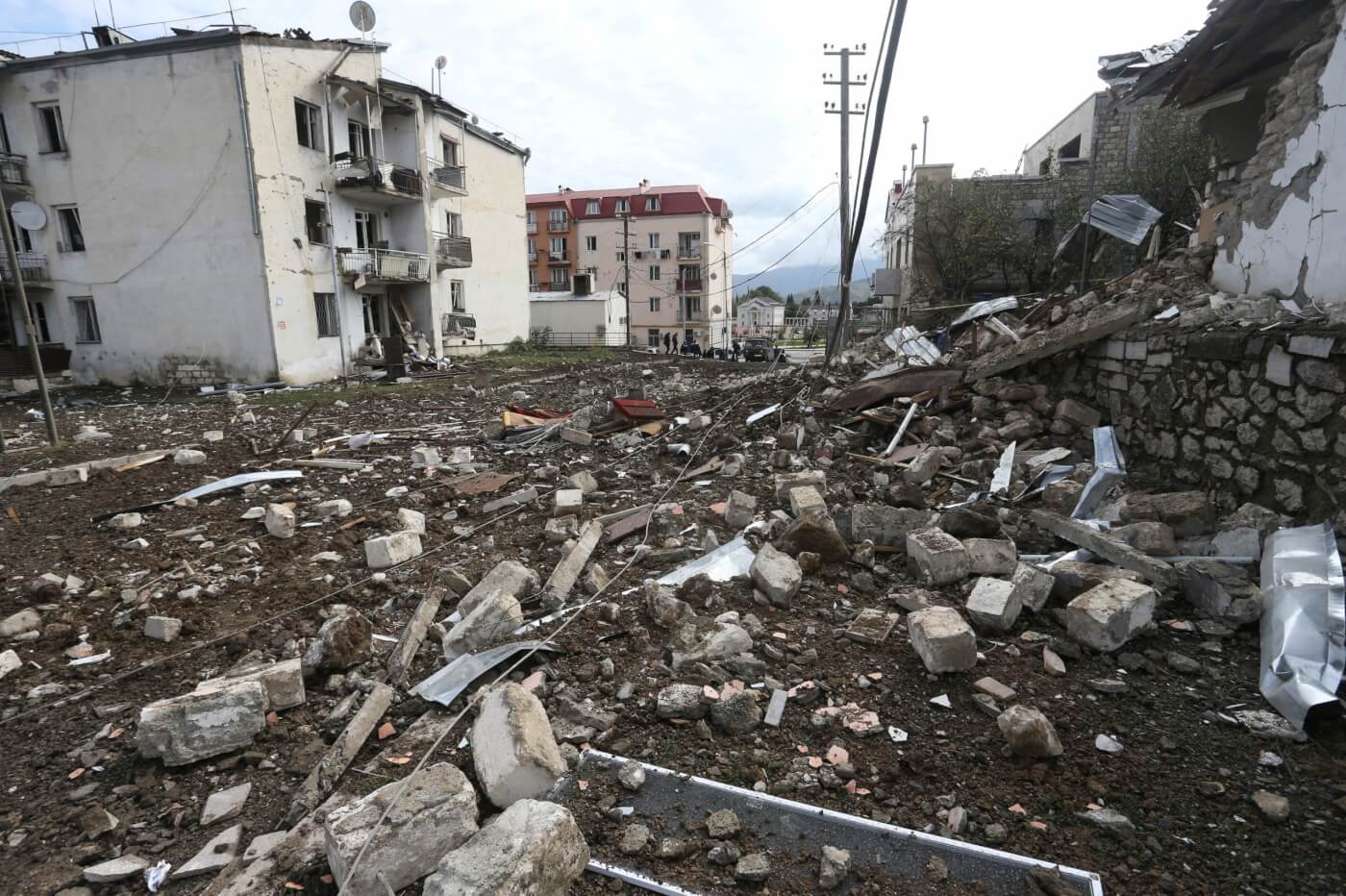As international mediators are set to hold their first meeting in Geneva today, 8 October, clashes between Armenian and Azerbaijani forces have killed more than 360 people, including 320 military personnel and 19 civilians in Nagorno-Karabakh, and 28 Azeri civilians.
They are the deadliest clashes since a 1991-94 war over Nagorno-Karabakh that killed about 30,000.
The fighting has displaced half of the population of the breakaway region.
“According to our preliminary estimates, some 50% of Karabakh’s population and 90% of women and children – or some 70,000-75,000 people – have been displaced,”
Karabakh’s rights ombudsman Artak Beglaryan told AFP on Wednesday.
The meeting in Geneva is hosted by the Organisation for Security and Co-operation in Europe’s Minsk group, which is jointly chaired by diplomats from France, Russia, and the United States. The OSCE’s Minsk group has sought a solution to the conflict since the 1990s.
Historical context
Nagorno-Karabakh broke away from Azerbaijan in a war in the early 1990s that claimed the lives of some 30,000 people. The Armenian separatists declared independence. The region’s 140,000 inhabitants are now almost exclusively Armenians after the remaining Azerbaijanis left during the war.
Yet the international community regards it as part of Azerbaijan and no state, including Armenia, recognises its independence.
Sporadic fighting has erupted frequently since a May 1994 ceasefire, most notably in 2016, as ethnic tensions and historical grievances have made kindling for conflict for decades.
Why has the conflict flared up again now?
This year, a small flare-up in July went almost ignored. Analysts say that France, the US and Russia, who are chairing the Minsk group responsible for the diplomatic settlement process, are distracted and increasingly at odds over other issues and therefore, have neglected the conflict.
The conflict simmered, all but forgotten, until Sunday 4 October when fighting that was reported to be fierce broke out and quickly escalated, with the two sides claiming action with artillery, helicopter and tanks along a disputed border. Armenian Prime Minister Pashinyan said the military of the Karabakh region had repelled an attack while Azerbaijan said it was responding to cross-border artillery shelling.
Both sides have been accused of using banned cluster bombs and after images of the bomblets appeared in the media and online, Amnesty International said its experts were able to trace the location of where the weapons had been used in Stepanakert, the capital of Nagorno-Karabakh.
“The use of cluster bombs in any circumstances is banned under international humanitarian law, so their use to attack civilian areas is particularly dangerous and will only lead to further deaths and injuries,”
said Denis Krivosheev, Amnesty’s acting head of research for eastern Europe and central Asia.
An internationalisation of the conflict
Turkey’s foreign minister Mevlut Cavusoglu said on 6 October that the world should back Azerbaijan as “the side of those who are right”, describing Armenia as the “occupier” and many analysts say that Turkey’s involvement this time has changed the landscape.
Turkey has reportedly sent pro-Ankara Syrian fighters to boost Azerbaijan forces and drones that have already been deployed with success in Libya and Syria. The Syrian Observatory for Human Rights says 1,200 fighters have been sent and at least 64 have died.
However, as reported by Lindsey Snell for The Investigative Journal, many Syrians who travelled to the region now say they feel “tricked”.
“They tricked us. They told us we were coming to guard a Turkish base. Then we get here and it’s fighting, right away, it’s fighting. The sons of bitches will not return us,”
a Hamza Division militant in Azerbaijan told Snell.
“The fighting isn’t like anything I have seen. It’s like a movie. It’s constant bombardment.”
Russia has cordial relations and sells arms to both sides but has a military base in Armenia and Yerevan is a member of a Russia-led regional security group while Baku is not.
Iran, which borders both Armenia and Azerbaijan, has been talking to both countries as concern mounts that Turkey and Russia could be sucked into the conflict.
The EU High Representative for Foreign Affairs, Josep Borrell, said in a statement that “the current military confrontation along the Line of Contact in the Nagorno Karabakh conflict zone is of our utmost concern.” He called for an immediate cessation of hostilities, de-escalation and strict observance of the ceasefire.
“Our position is clear: the fighting must stop.”

